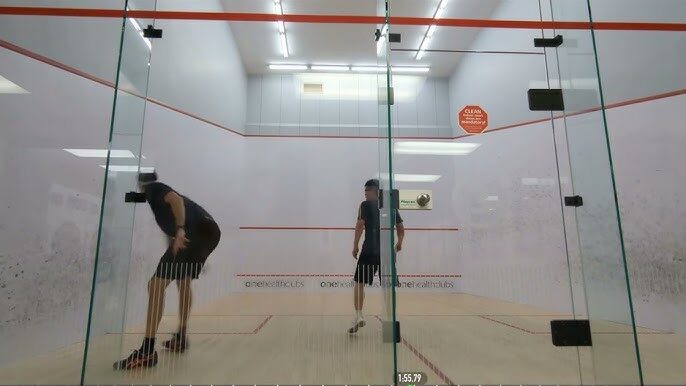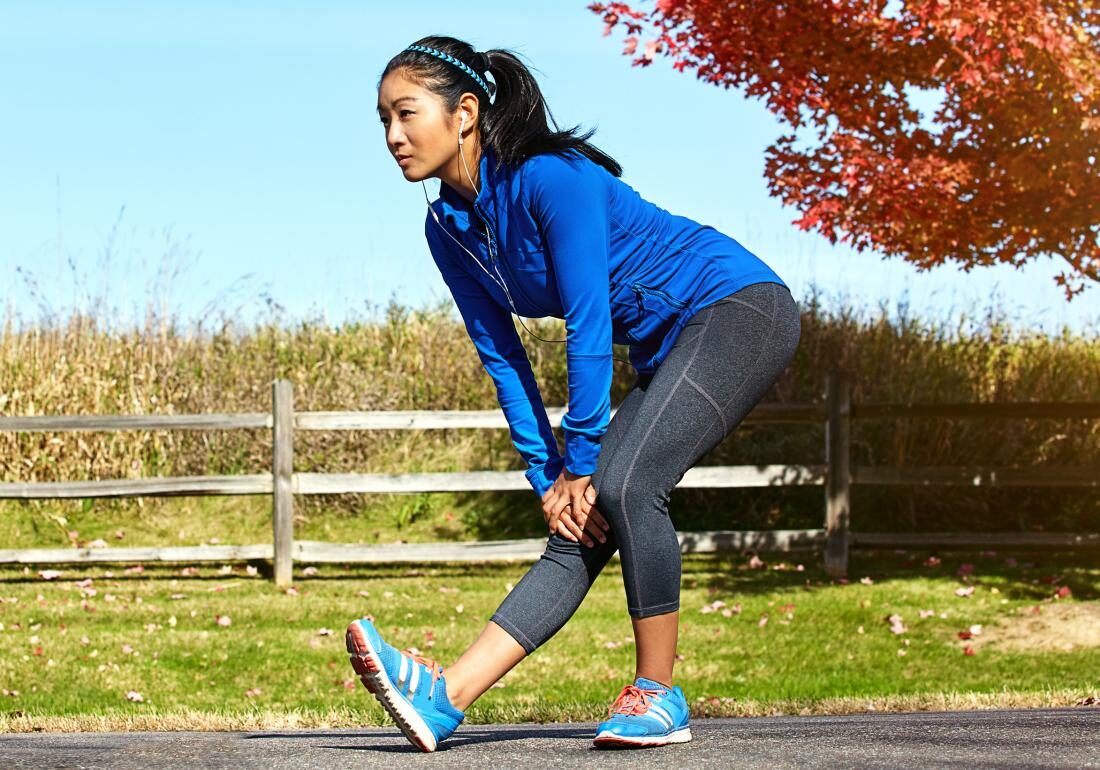Squash is an exhilarating, fast-paced sport that demands quick reflexes, agility, and strength. Whether you’re a professional or a casual player, recovery is crucial for maintaining peak performance and avoiding injuries. Stretching routines for squash recovery are vital to help your muscles recover, improve flexibility, and prevent future strains. In this guide, we’ll explore the importance of stretching after playing squash, share effective stretching routines, and explain how these practices contribute to your recovery.
Why Stretching is Crucial for Squash Recovery
Muscle Relaxation
After an intense game of squash, your muscles are fatigued and tense from the constant movement, lunging, and quick direction changes. Stretching helps to alleviate this tension by lengthening the muscle fibers and allowing them to return to their natural state. This relaxation promotes recovery and reduces the likelihood of soreness in the days that follow.
Injury Prevention
Squash players are prone to various injuries due to the sport’s high-impact nature. Stretching is essential for injury prevention, as it improves flexibility and range of motion. Regularly incorporating stretching into your routine can reduce the risk of muscle strains, ligament sprains, and joint injuries, especially in areas like the hips, shoulders, and knees.
Flexibility and Mobility
Maintaining flexibility is key for squash players. The sport requires dynamic movements such as lunges, rapid sprints, and quick pivots. Stretching increases the range of motion in the joints and muscles, allowing players to move more efficiently on the court. Moreover, stretching helps keep muscles flexible and adaptable to the demands of the game.
Types of Stretching for Squash Recovery
Dynamic Stretching (Pre-game and Warm-up)
Dynamic stretching is performed before the game to prepare your muscles for the intense activity ahead. These stretches involve controlled movements that gradually increase your heart rate and enhance muscle flexibility. Dynamic stretches can reduce the risk of injury by warming up the muscles and joints before a strenuous game.
Examples of dynamic stretches for squash:
- Leg swings (front to back, side to side) to loosen the hips
- Torso twists to increase spinal flexibility
- Lunges with a twist to activate the legs and torso
- High knees and butt kicks to engage the hip flexors and glutes
Static Stretching (Post-game Recovery)
After the game, static stretching is essential for muscle recovery. Static stretches involve holding a stretch for 15-30 seconds to lengthen muscles and improve flexibility. This type of stretching helps reduce muscle soreness, prevent tightness, and promote relaxation in the body.
Examples of static stretches for squash recovery:
- Hamstring stretch to release tension in the legs
- Quad stretch to alleviate tightness in the front of the thighs
- Shoulder stretch to relieve tension from racquet swings
- Calf stretch to lengthen muscles used in footwork
Key Muscle Groups to Target in Squash Recovery Stretching
Certain muscle groups are used heavily during squash, so it’s important to target them in your stretching routine for maximum recovery.
Hip Flexors
The hip flexors are involved in lunging, sprinting, and quick directional changes. Stretching the hip flexors helps reduce tightness and improve mobility in the lower body.
Hamstrings
Squash requires frequent running and rapid changes in direction, which can strain the hamstrings. Stretching the hamstrings helps release tension and prevent injury.
Quadriceps
The quadriceps are used in squatting, lunging, and jumping. Stretching the quads helps maintain flexibility and reduce muscle soreness after intense squash play.
Shoulders and Arms
Your shoulders and arms undergo repetitive motions, especially when swinging the racquet. Stretching the upper body reduces stiffness and increases the range of motion for smoother racquet swings.
Lower Back
Squash players often twist their torsos during shots, leading to potential lower back discomfort. Stretching the lower back helps release tension from these movements and improves flexibility in the spine.
Calves and Ankles
Quick footwork in squash places stress on the calves and ankles. Stretching these areas helps prevent cramping and improves mobility for better court coverage.
Recommended Squash Recovery Stretching Routine
A well-rounded stretching routine should target the major muscle groups involved in squash. Here’s a step-by-step post-game stretching routine to aid recovery:
Warm-up Routine (Dynamic Stretches)
Before your game, follow these dynamic stretches:
- Leg Swings – Swing each leg forward and backward, 10 reps per leg.
- Torso Twists – Rotate your torso side to side, 10 reps each side.
- Lunges with a Twist – Step forward into a lunge, twist your torso, 10 reps per leg.
- High Knees and Butt Kicks – Perform 30 seconds of each exercise.
Post-game Routine (Static Stretches)
After your game, hold each stretch for 15-30 seconds to help release tension:
- Hamstring Stretch – Sit with one leg extended and reach for your toes, targeting the hamstrings.
- Quad Stretch – Stand on one leg, pull the other foot toward your glutes, and hold.
- Shoulder Stretch – Stretch each arm across your body to target shoulder muscles.
- Calf Stretch – Place your foot against a wall and lean forward to stretch your calf.
Frequency
For optimal recovery, stretch regularly after every squash session, ideally immediately after finishing your game while the muscles are still warm. Aim for at least 15 minutes of stretching to maximize flexibility and muscle recovery.
Additional Recovery Techniques for Squash Players
While stretching is essential, other recovery techniques can further enhance muscle recovery and performance.
Foam Rolling
Foam rolling helps to release tight spots and muscle knots by applying pressure to the muscles. Use a foam roller to target areas such as the quads, hamstrings, calves, and back to reduce muscle stiffness and improve circulation.
Hydration and Nutrition
Proper hydration and nutrition are crucial for muscle recovery. Drink plenty of water to rehydrate after your game and consume a balanced meal with protein and carbohydrates to aid muscle repair.
Rest and Sleep
Give your muscles time to recover by allowing adequate rest between squash sessions. Sleep is equally important, as it’s when your body repairs and regenerates muscle tissue.
Common Mistakes to Avoid When Stretching for Squash Recovery
To get the most out of your stretching routine, avoid these common mistakes:
Overstretching
While stretching is important, overstretching can lead to injury. Never push your body beyond its limits. Stretch to the point of mild discomfort, not pain.
Skipping Warm-ups or Cool-downs
Neglecting a warm-up or cool-down can leave your muscles stiff and more prone to injury. Always ensure that you include a warm-up before your squash session and a cool-down afterward.
Not Listening to Your Body
It’s essential to listen to your body when stretching. If you feel any sharp pain or discomfort, stop and reassess. Stretching should be a gentle process that promotes relaxation, not a strain.
Conclusion
Incorporating effective stretching routines into your squash recovery is essential for improving flexibility, preventing injuries, and boosting performance. Make sure to include both dynamic stretches before your game and static stretches afterward for maximum recovery benefits. By stretching regularly, hydrating, and getting enough rest, you’ll ensure that your body remains in top condition to dominate on the court.
Frequently Asked Questions (FAQs)
How long should I hold each stretch for recovery?
Hold each static stretch for 15-30 seconds to effectively target the muscles and promote relaxation.
Can stretching prevent all injuries in squash?
While stretching reduces the risk of injuries, it cannot guarantee complete prevention. Combine stretching with proper technique, strength training, and adequate rest for optimal injury prevention.
Is foam rolling better than static stretching for recovery?
Both foam rolling and static stretching have benefits for recovery. Foam rolling helps relieve muscle tightness, while static stretching increases flexibility. It’s best to incorporate both into your recovery routine.
How often should I stretch if I play squash regularly?
Stretch after every squash session to help maintain flexibility and prevent muscle tightness. You may also include additional stretching sessions on rest days for further flexibility gains.
Are there specific stretches for preventing squash elbow or shoulder injuries?
Yes! Focus on stretching the forearms, wrists, shoulders, and upper back to prevent injuries like squash elbow. Include stretches like wrist flexor stretches and shoulder rotations.




